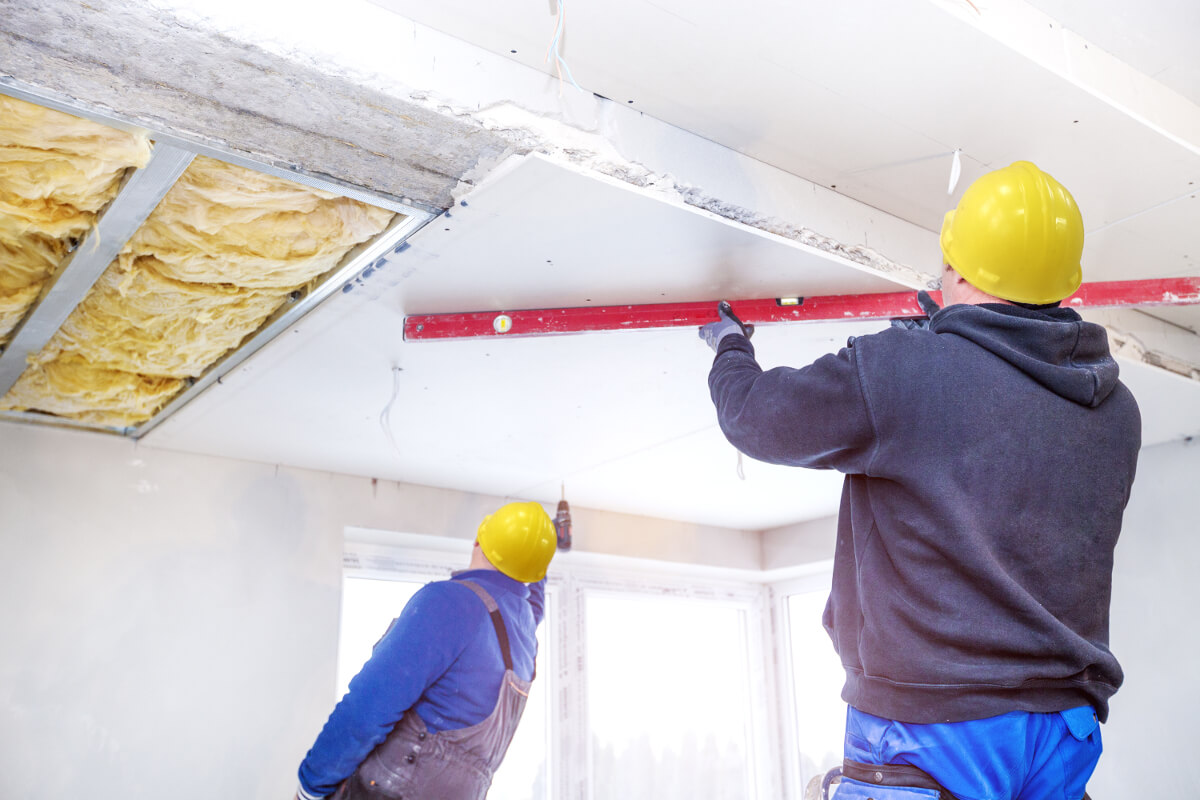Comprehensive Drywall Contractor Support for New Builds
Comprehensive Drywall Contractor Support for New Builds
Blog Article
Drywall Installment Facilitated: Tips for Perfect Outcomes
Drywall setup is often perceived as a complicated task, yet with the ideal approach and knowledge, it can end up being a convenient endeavor. Understanding techniques for cutting, hanging, and ending up drywall can considerably influence the outcome.
Selecting the Right Products
Selecting the proper materials for drywall setup is critical to achieving a long lasting and cosmetically pleasing finish. drywall contractor. The key element, drywall sheets, typically can be found in different thicknesses, with 1/2-inch sheets being common for indoor walls. For locations calling for additional moisture resistance, such as shower rooms or cooking areas, think about making use of environment-friendly board or cement board, which are specially developed to stand up to moisture

In addition, picking the ideal bolts-- either screws or nails-- is vital for protecting the drywall to the framing. Drywall screws are typically favored for their holding power and reduced threat of standing out. Think about the finishing touches such as primer and paint, which not only boost the look but also shield the drywall from wetness and wear.
Preparing the Setup Area
Before starting the drywall installation process, it is crucial to prepare the installment location extensively. A tidy work area decreases the risk of damages to existing items and enables for reliable motion throughout installation.
Next, evaluate the walls and ceiling for any type of blemishes, such as cracks, openings, or mold and mildew. Address these issues in advance; spot any damages and permit sufficient time for repair work to completely dry. Additionally, guarantee that electric outlets, buttons, and plumbing are correctly placed and made up, as this will affect drywall positioning.
Think about the ecological conditions. A steady temperature and humidity level are important for ideal bond and performance of the drywall materials. If required, use a dehumidifier or heater to create suitable problems.
Cutting and Hanging Drywall
The key to reliable drywall setup lies in the precise cutting and dangling of the panels. Utilize a straight edge and an energy knife to score the drywall along your dimensions, then break it along the racked up line for a clean break.

Constantly work from the top down and entrusted to right, guaranteeing that you keep a staggered pattern to enhance stability. Effectively hanging the drywall sets the structure for a smooth coating, ultimately causing superior cause your drywall task.
Taping and Mudding Methods
While correct cutting and dangling of drywall sets the stage, the following crucial step includes understanding taping and mudding techniques to make sure a smooth coating. Taping is vital for reinforcing joints and avoiding fractures; it entails installing tape into the applied joint compound (mud) Begin with a top quality fiberglass or paper tape, using the tape over the joint and pushing it right into the wet mud using a taping knife, making sure no air bubbles stay.
As site here soon as the tape remains in area, use a thin layer of joint compound over the tape, feathering the edges to create a smooth transition to the drywall surface. Allow this layer to dry totally before sanding it lightly to eliminate flaws. Repeat this process, applying extra coats of mud as my website required-- normally 2 to 3 layers-- while slowly broadening the application area with each layer to accomplish a seamless look.
After the final coat dries out, sand the surface area with a fine-grit sandpaper till smooth. drywall contractor. Remember to put on a mask throughout fining sand to prevent inhaling dust particles. Understanding these taping and mudding strategies is crucial for achieving a professional-quality surface in your drywall setup
Completing Touches for Perfection
Accomplishing a perfect drywall setup exceeds mudding and taping; it finishes in the ending up touches that boost the general appearance. These last actions are important in making certain a professional-grade finish that enhances the aesthetic appeals of your area.
Begin by fining sand the dried out joint compound to create a smooth surface. Use a fine-grit sandpaper and a fining sand block or post sander for optimal control. Pay particular focus to edges and sides, as these locations often tend to call for even more thorough job. After fining sand, wipe down the wall surfaces with a damp cloth to eliminate any kind of dirt particles, guaranteeing a tidy surface for paint.
Next, use a guide especially made for drywall. This step is crucial, as it assists seal the joint substance and gives an uniform base for the topcoat. When the guide dries out, examine for any flaws, and touch up as needed.
Final Thought
In final thought, successful drywall installment hinges on the careful selection of materials, extensive prep work of the installment location, and exact execution of cutting and hanging techniques. Proficiency of taping and mudding procedures is vital for achieving a smooth surface.
Drywall setup is usually perceived as a complicated job, yet with the appropriate approach and understanding, it can come to be a manageable undertaking.Selecting the ideal materials for drywall installation is crucial to achieving a resilient and aesthetically pleasing surface.Prior to beginning the drywall installation process, it is essential to prepare the installment area thoroughly. Understanding these taping and mudding techniques is crucial for achieving a professional-quality finish in your drywall installment.
In final thought, effective drywall setup pivots on the mindful selection of products, extensive preparation of the installment area, and specific implementation of cutting and hanging techniques.
Report this page